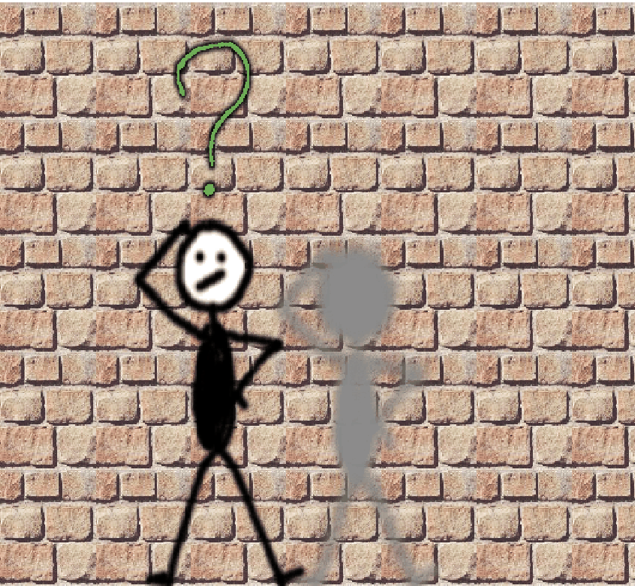The holographic principle and M-theory
To them, I said,
the truth would be literally nothing
but the shadows of the images.
Plato, The Republic (Book VII)
Holography Through the Ages
Plato, the Greek philosopher, wrote a series of 'Dialogues' which summarized many of the things which he had learned from his teacher, who was the great philosopher Socrates. One of the most famous of these Dialogues is 'The Republic', which features the 'Allegory of the Cave'. In this allegory, people are chained in a cave so that they can only see the shadows which are cast on the walls of the cave by a fire. To these people, the shadows represent the totality of their existence - it is impossible for them to imagine a reality which consists of anything other than the fuzzy shadows on the wall.
However, some prisoners may escape from the cave; they may go out into the light of the sun and behold true reality. When they try to go back into the cave and tell the other captives the truth, they are mocked as madmen.
Of course, to Plato this story was just meant to symbolize mankind's struggle to reach enlightenment and understanding through reasoning and open-mindedness. We are all initially prisoners and the tangible world is our cave. Just as some prisoners may escape out into the sun, so may some people amass knowledge and ascend into the light of true reality.
What is equally interesting is the literal interpretation of Plato's tale: The idea that reality could be represented completely as 'shadows' on the walls.
The Holographic Principle and Modern Physics
In 1993 the famous Dutch theoretical physicist G. 't Hooft put forward a bold proposal which is reminiscent of Plato's Allegory of the Cave. This proposal, which is known as the Holographic Principle, consists of two basic assertions:
Assertion 1 The first assertion of the Holographic Principle is that all of the information contained in some region of space can be represented as a 'Hologram' - a theory which 'lives' on the boundary of that region. For example, if the region of space in question is the DAMTP Tearoom, then the holographic principle asserts that all of the physics which takes place in the DAMTP Tearoom can be represented by a theory which is defined on the walls of the Tearoom.
Assertion 2 The second assertion of the Holographic Principle is that the theory on the boundary of the region of space in question should contain at most one degree of freedom per Planck area.
A Planck area is the area enclosed by a little square which has side length equal to the Planck length, a basic unit of length which is usually denoted Lp. The Planck length is a fundamental unit of length, because it is the parameter with the dimensions of length which can be constructed out of the basic constants G (Newton's constant for the strength of gravitational interactions), ℏ (Planck's constant from quantum mechanics), and c (the speed of light). A quick calculation reveals that Lp is very small indeed: Lp=1.6x10-33cm
To many people, the Holographic Principle seems strange and counterintuitive: How could all of the physics which takes place in a given room be equivalent to some physics defined on the walls of the room? Could all of the information contained in your body actually be represented by your 'shadow'?

Man ponders shadow, or shadow ponders itself?
In fact, the way in which the Holographic Principle appears in M-theory is much more subtle. In M-theory we are the shadows on the wall. The 'room' is some larger, five-dimensional spacetime and our four-dimensional world is just the boundary of this larger space. If we try to move away from the wall, we are moving into an extra dimension of space - a fifth dimension. In fact, people have recently been trying to think of ways in which we might actually experimentally 'probe' this fifth dimension.
At the heart of many of these exciting ideas is a version of the Holographic Principle known as the adS/CFT correspondence.
Are YOU a Hologram? M-theory and the adS/CFT correspondence
The adS/CFT correspondence is a type of duality, which states that two apparently distinct physical theories are actually equivalent. On one side of this duality is the physics of gravity in a spacetime known as anti-de Sitter space (adS). Five-dimensional anti-de Sitter space has a boundary which is four-dimensional, and in a certain limit looks like flat spacetime with one time and three space directions. The adS/CFT correspondence states that the physics of gravity in five-dimensional anti-de Sitter space, is equivalent to a certain supersymmetric Yang-Mills theory which is defined on the boundary of adS. This Yang-Mills theory is thus a 'hologram' of the physics which is happening in five dimensions. The Yang-Mills theory has gauge group SU(N), where N is very large, and it is said to be 'supersymmetric' because it has a symmetry which allows you to exchange bosons and fermions. The hope is that this theory will eventually teach us something about QCD (quantum chromodynamics), which is a gauge theory with gauge group SU(3). QCD describes interactions between quarks. However, QCD has much less symmetry than the theory defined on the boundary of adS; for example, QCD has no supersymmetry. Furthermore, we still don't know how to incorporate a crucial property of QCD, known as asymptotic freedom.
Here in DAMTP, we have been working to see if the adS/CFT correspondence can be generalized. Working with collaborators in such far-flung places as the United States, Canada, and Durham, we have managed to show that the duality is still true even when you replace adS with more complicated five-dimensional spacetimes. In particular, we have calculated what happens when you put electric charge in adS, or rotation in adS, or even what happens when you put a certain exotic charge known as 'NUT-charge' into adS.
